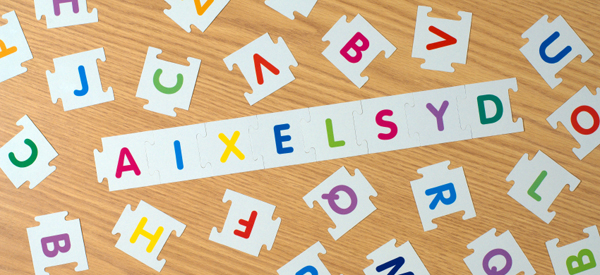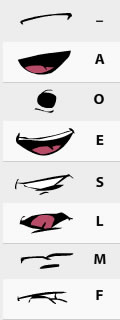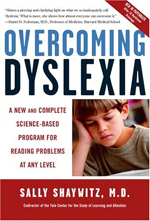
Resources  Dyslexia is a difficulty in learning how to read that is not explained by medical conditions such as far-sightedness or cognitive impairment. Specifically, dyslexia is caused by an inability to connect letters with the sounds that they represent, which is called “a lack of phonemic awareness.”
Phonemes are the speech sounds that combine to form words - there are about 44 phonemes in the English language. For example, the word “car” has three phonemes: the “k” sound, the “ah” sound and the “r” sound. English is especially tricky because one letter may have many sounds, and one sound may be represented by several possible letters.
So how do we teach phonics to a person who has difficulty interpreting phonemes?
The answer is: with creativity and repetition.
Dyslexia is a difficulty in learning how to read that is not explained by medical conditions such as far-sightedness or cognitive impairment. Specifically, dyslexia is caused by an inability to connect letters with the sounds that they represent, which is called “a lack of phonemic awareness.”
Phonemes are the speech sounds that combine to form words - there are about 44 phonemes in the English language. For example, the word “car” has three phonemes: the “k” sound, the “ah” sound and the “r” sound. English is especially tricky because one letter may have many sounds, and one sound may be represented by several possible letters.
So how do we teach phonics to a person who has difficulty interpreting phonemes?
The answer is: with creativity and repetition.
Sally Shaywitz, author of “Overcoming Dyslexia,” writes about the importance of choosing a supportive literacy curriculum and following through with it. Here are some of the curricula that she recommends:
1. Read Naturally is an intervention program based on teacher modeling, repeated reading of the same text until mastery is achieved and daily monitoring of student progress.
2. Language! The Comprehensive Literacy Curriculum is an intensive, research-based program for struggling readers - the phonics and reading exercises are intended to take 90 to 120 minutes per day.
3. SpellRead is a one-year multisensory intervention program for small groups of struggling readers.
4. SRA Early Interventions in Reading is the curriculum that many public schools use, since it is intended as a supplement to the core curriculum already in place.
5.Lindamood-Bell Phoneme Sequencing Program focuses on speech sounds instead of written words. once the speech sounds are mastered, individuals become self-correcting in reading and spelling.
6.Wilson Just Words curriculum places emphasis on word study and phonics to increase reading fluency.
7. Orton-Gillingham approach is the most well-known type of instruction for those with dyslexia. The practices are multisensory and highly structured.
It turns out that there are plenty of ways to help a student with dyslexia learn how to read and write! Please share your success stories in the comments below.
A Complete Self Help Guide For Dyslexia
My neighbor recently posted on Facebook, “Talk to me about dyslexia. What are the biggest challenges? Any good do-it-yourself strategies for learning to write?” No one answered. So I decided to help out.Definition Of Dyslexia
 Dyslexia is a difficulty in learning how to read that is not explained by medical conditions such as far-sightedness or cognitive impairment. Specifically, dyslexia is caused by an inability to connect letters with the sounds that they represent, which is called “a lack of phonemic awareness.”
Phonemes are the speech sounds that combine to form words - there are about 44 phonemes in the English language. For example, the word “car” has three phonemes: the “k” sound, the “ah” sound and the “r” sound. English is especially tricky because one letter may have many sounds, and one sound may be represented by several possible letters.
So how do we teach phonics to a person who has difficulty interpreting phonemes?
The answer is: with creativity and repetition.
Dyslexia is a difficulty in learning how to read that is not explained by medical conditions such as far-sightedness or cognitive impairment. Specifically, dyslexia is caused by an inability to connect letters with the sounds that they represent, which is called “a lack of phonemic awareness.”
Phonemes are the speech sounds that combine to form words - there are about 44 phonemes in the English language. For example, the word “car” has three phonemes: the “k” sound, the “ah” sound and the “r” sound. English is especially tricky because one letter may have many sounds, and one sound may be represented by several possible letters.
So how do we teach phonics to a person who has difficulty interpreting phonemes?
The answer is: with creativity and repetition.




